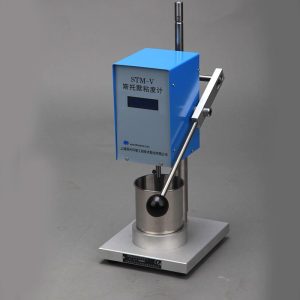ความสัมพันธ์ระหว่างความหนืดและอัตราการเฉือน
มีความสัมพันธ์ใกล้ชิดระหว่างความหนืดและอัตราการเฉือน, which is the rate at which a liquid deforms under shearing force.

Shear rate is a physical quantity describing the rate of liquid deformation, representing the deformation rate within a unit time. It is the ratio of Shear velocity to the geometric constraint under which the liquid is placed. Shear rate is usually expressed as the ratio of the displacement difference per unit time (ความเร็วเฉือน) ถึงระยะห่างระหว่างสองชั้นขนานกัน (ระยะเฉือน). The unit is usually the reciprocal of seconds (ส^(-1)).
ความสัมพันธ์ระหว่างความหนืดและอัตราการเฉือน
ความหนืด (ความหนืด) is the internal viscosity resistance of a liquid and a measure of viscosity or fluidity. ยิ่งมีความหนืดสูง, the thicker the liquid and the more difficult it is to flow. Viscosity is usually expressed as the ratio of force per unit area to velocity difference per unit time (อัตราเฉือน). โดยปกติหน่วยจะเป็นวินาที PASCAL (ปา·ส) หรือมิลลิปาวินาที (mPa·s).
The relationship between viscosity and shear rate can be described by Newton’s law of fluid. Newtonian fluid is an idealized fluid with constant viscosity independent of shear rate. According to Newton’s Law of fluid, ความหนืดเท่ากับอัตราส่วนของความเค้นต่ออัตราการเฉือน.
ความสัมพันธ์ระหว่างความหนืดและอัตราการเฉือน
ในของเหลวของนิวตัน, changes in shear rate do not affect the viscosity, ไม่ว่าอัตราเฉือนจะเล็กหรือใหญ่. The viscosity of a Newton fluid remains constant regardless of the speed and manner at which the fluid is shear. อย่างไรก็ตาม, สำหรับของไหลที่ไม่ใช่ของนิวตัน (such as shear-diluting and shear-thickening liquids), ความหนืดจะเปลี่ยนไปตามอัตราเฉือนที่เปลี่ยนแปลง. ซึ่งหมายความว่าความหนืดของของไหลที่ไม่ใช่ของนิวตันนั้นเป็นฟังก์ชันของอัตราเฉือน, and it can increase or decrease with increasing shear rate. ความสัมพันธ์ระหว่างความหนืดและอัตราเฉือนของของไหลที่ไม่ใช่ของนิวตันสามารถอธิบายและทำนายได้โดยการทดสอบทางรีโอโลยีและแบบจำลองทางรีโอโลยีที่เหมาะสม.
